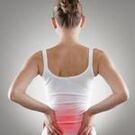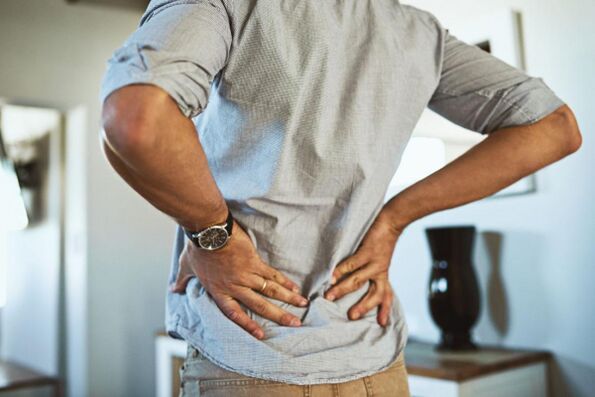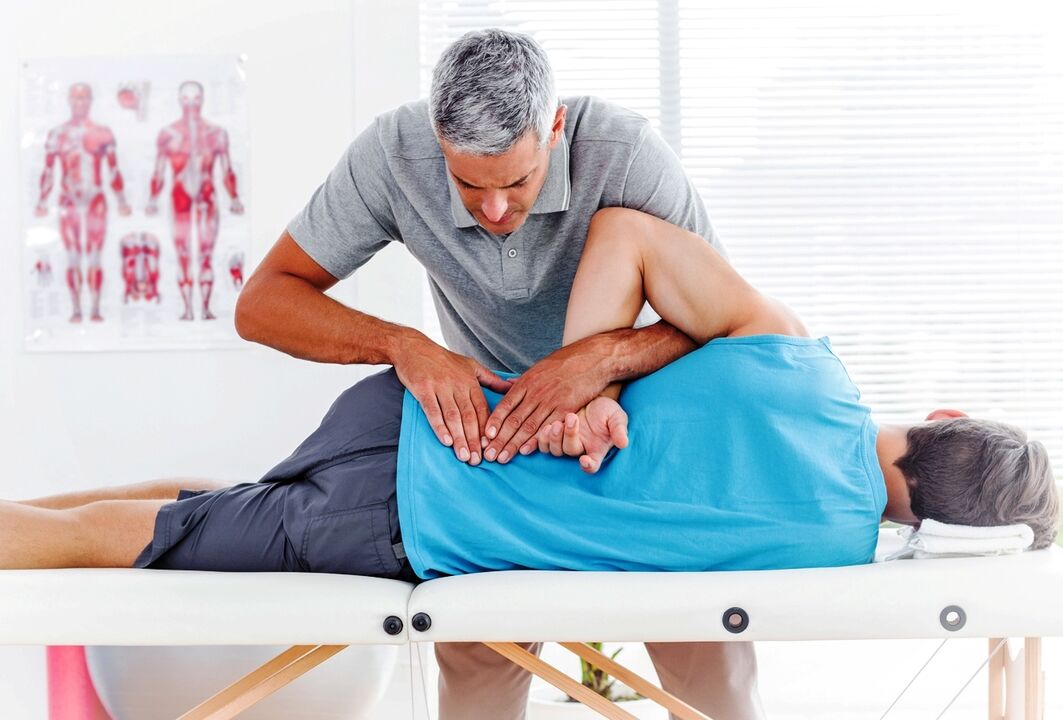
Low painIndicates the disease or damage to the spinal column, nerve structures, soft tissues, internal bodies, the grapes of various genesis were observed.It is acute, stupid, permanent, periodic, ignition, shooting, shooting.It is sometimes associated with physical activity, changes in time.Travelogues, manifest pain in the lower back, were diagnosed on the basis of complaints, history, test data and additional studies: radiography, MRI, CT.Before making diagnosis, peace needs peace, sometimes the use of fat is allowed, getting analgesics.
Why the lower back hurts
Spinal diseases
The common cause of lower back pain is innate anomalia and acquired spinal column diseases.The nature of the pain of the pain varies.Pain caused directly by the pathological process, often periodically, locally, painful or withdrawal, related to the weather, physical activity, remain in an unpleasant position.
Due to muscle cramps, Lumbago (side) comes - sharp pain accompanied by motion limitations.With many spine pathologies, Lumbuyshiwalgia is noticed - pain, ignition or firewood, radiating on the back of the thigh.Pain sensations are often found in radicular syndrome.It can be detected in the following diseases of the spinal column:
- Degenerative pathology: Osteochondrosis, intervertebral disk protuberance, intervertebral hernia, spondylosis, sponding arthrosis.
- Congenital anomalies: sacrization, lumbarization.
- Polyethological conditions: spondylolis, spondylography.
- Vascular diseases: Spinal circulation violations.
- Other diseases: Diseases.
- Secondary lesions of nervous structures: Lumbosatral radiculitis, lumbosatral plexitis, mix various genesis.

Spine curvature
Smaller or moderate pain aches for all types of spinal column, which is associated with the unviolent redistribution of cargo, muscle overvoltage and rear side ligaments.The initial occurs as a result of an unpleasant body position, sleep too hard or too soft bed.Symptom accompanied:
- Lordoza;
- Kiphosis;
- Scoliosis;
- Kiphoskoliosis;
- Flat back syndrome.
Osteoporosis
Withdrawal or painful pain sensation in the lumbar and thoracic spine for a long time they have been the only symptom of osteoporosis.It is explicitly expressed in crude pain, increases after the load before changing the weather.The symptom is noticed on the following varieties of osteoporosis:
- postmenopausal;
- Juvenile;
- idiopathic;
- Senil.
Similar pains are discovered in patients with secondary forms of pathology, due to genetic diseases, endocrine disorders, chronic to be taken and taking some drugs.Secondary osteoporosis can also occur against the background of MalationSorption syndrome, liver disease, KHPNA, rheumatoid arthritis, PA.
Strengthening pain, increasing pain can be associated with the development of pathological fracture.Other signs of trauma are often not expressed, so the transitions often remain undiagnosed.
Spine injuries
The most common damage is a bruise of the spinal column.In gentle cases, pathology is manifested in moderate pain in the lower back, intensifying during movement, local edema, and sometimes hematomas and bleeding.In strong bruises, neurological disorders are added to the above symptoms.
The lumbar spine compression break occurs due to violent body flexion.It is characterized by sharp pain, holding breathing at the time of injury.Then there was an increase in pain in the case of the Corps bend, the edem of soft tissues was discovered.The palpation of the sponge of splinse is painful.Other possible fractures include injury, transverse processes, projected processes.
In addition, the pain in the lower back is in patients with traumatic spondylolistitis and the subbruxation of vertebrae.The painful sensations are paroxysmal, reminiscent of lumbaically, complemented by the feeling of weight and stiffness of the lower extremities.
Bursts of soft tissues and kidney
The ovred soft tissues follows the insignificant or moderate quick participant in local pain, small edema.Bleeding is possible.There is no blood in the urine.Kidney bruise manifest pain and insignificant short hematuria short.In the case of kidney injuries, the painful syndrome is intense, the pain radiates to the lower abdomen, groin and genitals.Hematoma is visible in the lumbar area.In severe cases, strong pain, extended macrohematuria are observed.The state of shock is developing.
Stice and spinal cable infections
Osteomyelitis spine can be hematogen, post -traumatic, contact, postoperative.The acute form of the disease is manifested by rapidly by increasing lower back pain, combined with refrigerators, fever, intoxication syndrome and exacerbation.Pain jerking, burst, so intensely to prevent movements, forced the patient to freeze in bed.In chronic osteomytis, manifestations are smoothed, a philic course with pure separate is formed.
The tuberculosis of the spinal column is gradually developed.Initially, periodic deep pain, improved after load, increased skin sensitivity in the projection of the affected vertebrae.The stiffness of the home is formed.Against the background of the significant destruction of bone structures, the nature of pain change, because it is caused by compression of nerve roots.The pain becomes burned, radiates on their feet, complement parestrics, numbness.
In patients with spinal epidural abscess, pain is strong, deep, poured, combined with cold, hyperthermia, muscular tension.Taping on the persecution of Splince vertebrae is painful.In addition to the progression of pathology, there is a patholom, then the steam-pair, the disorders of the body pelvis.
Local inflammatory processes
Grain processes in surface tissues and near - land fibers are accompanied by intensive lower back pain.Possible causes of syndrome pain are key, carbunse and paranephritis.
In the first two cases, the abscess is formed in the skin, looks like a limited, sharply painter seal with a diameter 1 cm of a crimson or crimson-blue shades with one or more rods in the middle.The pain is rapidly enhanced, becomes twitching, pulsating, losing sleep.General hyperthermia, insignificant or moderate violations of the general state are noticed.
With paranophritis, a fever occurs initially.Cheese pain develops after 2-3 days.Pain is very intense, they can be given in a stomach or hypochondrium, intensify when walking, movements, deep breathing.In some forms of paranophitis due to the pain, the patient takes a forcible position.Lumbar muscles are tense.Edema, local hyperemia, hyperthermia were discovered.The condition is serious.
Contagious diseases
Diffuse pain in the lower back, causing a desire to change the body position, are characteristic of acute fluid infections and in the temperature and intoxication syndrome.In most cases, because of myositis, often in combination with pain in the muscles of the limbs.Observed with flu, tonsilitis, acute respiratory viral infections.Sometimes pain is provoked by kidney damage.Infectious diseases accompanied by pain in the lower back include:
- Hemorrhagic fever;
- Japanese encephalitis of mosquitoes;
- Ebola fever;
- the disease of the foot and mouth;
- Heavy form of coronavirus infection;
- Generalized forms of bacterial, fungal, viral infections.
In a large number of patients, lower back pain is observed by cytokine storm - a inflammatory reaction that develops against the background of severe infectious diseases.Epidemiological mineralgia monitors intense paroxysmal pain for up to 10 minutes, which appear not only in the lower back, but also in other parts of the back, in the area of the abdominal wall, chest of drawers, limbs.Repeated an interval of 30-60 minutes.Combined with rhinitis, conjunctivitis, difficult hyperthermia.
Other muscular lesions
The pain in the muscles of the lumbar region is determined after intensive physical effort - the performance of the strength exercises for the back muscles, long stay in the forced position with strained lower back.Myalgia takes a break, amplifies during the movement, weaken after warming, neat heat, disappears after a few days.
Myoszi is not developing not only with infectious diseases, but also after hypothermia or overload, against the background of exogenous intoxication, metabolic disorders.Accompanied by long-term pain.There are also special forms of myositis:
- Specific contagious myositis for syphilis and tuberculosis;
- idiopathic, minor dermatomyositis and polymaticitis;
- Polymoitis and dermatomyositis for oncological pathology, systemic diseases of connective tissue.
Chronic diffuse pain all over the body, including the lower back, were observed with fibromyalgia.They are combined with sleep disorders, astenia, neurotic disorders.
Other diseases
In addition to the specified lower back pathology, they can be bothered with such conditions as:
- Spine tumor, spinal cord: Sarcoma, hemangioma, metastases, intramedular and extregraul neoplasms of spinal cord.
- Kidney disease: Pyelonephritis, glomerulonephritis, urolithiasis, heart attack, renal veins, renal cyst, kidney cancer, gnody processes.
- Hereditary: Ataxia Pierre-Marie.
- Exogenous threads: fenilpropanolamine abuse.
- Heart and blood vessel travel: Endocarditis Leffler, aneurism of abdominal aorta.
- Emergency conditions: hemotransfusion shock.
For the diseases of the pelvis, sometimes radiation of pain in the lower back is noticed.The appearance of symptoms is possible with the number of women's diseases, prostate cancer, screenings, sigmoids.
Diagnostics
The primary diagnosis is performed by an orthopedic traumatologist.In the presence of neurological symptoms of the patient, the neurologist examines.The doctor interviews the patient, performs objective examination.According to testimony, the consultations of surgeons, rheumatologists, urologists and other experts were appointed.The diagnostic program may include:
- Neurological examination.In the research process, the specialist evaluates reflexes, muscle strength, movement, deep and superficial sensitivity.
- X -Ray.On the radiographs of the lumbar department, breakage, reduction in the amount of interferebral disks, other degenerative changes, volumetric formations, signs of inflammatory processes and spondyloline.If necessary, standard radiographs complement functional studies.
- Other methods of neuro.To clarify radiograph data, CT and MRIs are used.During the calculations, the structure of solid structures is studied in detail, the state of ligaments and interverters are examined at the MRI.To turn off the stenosis, the myelography is made.
- Functional research.The state of muscle and nerve conductivity is estimated using electromiography, electronic radography and studies caused by potential.
- Laboratory tests.In order to confirm the infectious nature of the disease, the determination of pathogens makes blood tests and microbiological examination.Serological reactions are used to detect neuroinfections.

According to testimony, ultrasound of the kidney, prostate, pelvis of the organ, urine tests, abdominal aortic, other studies and other studies.
Line treatment of pain
Help in the negotiations
With traumatic damage to the spine, it is necessary to pass the patient on the shield and immediately delivered to the medical institution.In the event of disease of inhuman, it is necessary to reduce the load on the back, optimize the body position during operation and vacation.Acute pain syndrome is an indication for consulting with a neurologist.
Before professional interrogation, one intake of analgesics is possible.In Lumbaga, Lumbaga was caused by previously diagnosed degenerative spine diseases, the use of warming and side remedies of local acts was allowed.If there is a doubt about the presence of a contagious process, local funds are not shown.
Conservative therapy
The basis of treatment are physiotherapy measures and drug therapy.The patient is prescribed a protective regime.Apply the following methods:
- Nsaid.Effective in acute and chronic muscles and spine.Used in the form of tablets, local products.
- Neurotropic vitamins.Patients import B vitamins, which improve the effect of drug groups, help reduce pain.
- Local anesthetic.With stubborn and acute pain, therapeutic blockades with anesthetics were performed.To improve treatment results, painkillers combine with glucocorticosteroids.
- Physiology.Apply ultrasound, magnetotherapy, perkutan electrical stimulation, laser therapy, medicine electrophoresis.It is possible to prescribe massage, manual therapy, acupuncture.
Surgical treatment
Given the characteristics of pathology, the following surgical interventions are carried out:
- Instability: Inter-appreciable spondylodeses, tranned fixation, fixation with plates.
- Tumors, osteoporosis, osteomyelitis, tuberculosis: sequentralktomija, vertebroplastika, kiphoplastika, corporate.
- INTERVERTEBRAL HERNIAS: Discoctomy, microdiscectomy, nucleoplastic.
- Putting spinal channel: Laminat, FaceThetomy, Disco Prunction Descpression.
In the postoperative period, analgesics are prescribed, antibiotics.Rehabilitation measures include exercise therapy, massage, physiotherapy.



















